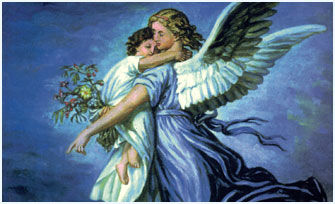Wilhelm von Kaulbach (1805 – 1874)
Get a Wilhelm von Kaulbach (1805 – 1874) Certificate of Authenticity for your painting (COA) for your Wilhelm von Kaulbach (1805 – 1874) drawing.
For all your Wilhelm von Kaulbach (1805 – 1874) artworks you need a Certificate of Authenticity (COA) in order to sell, to insure or to donate for a tax deduction.
Getting a Wilhelm von Kaulbach (1805 – 1874) Certificate of Authenticity (COA) is easy. Just send us photos and dimensions and tell us what you know about the origin or history of your Wilhelm von Kaulbach (1805 – 1874) painting or drawing.
If you want to sell your Wilhelm von Kaulbach (1805 – 1874) painting or drawing use our selling services. We offer Wilhelm von Kaulbach (1805 – 1874) selling help, selling advice, private treaty sales and full brokerage.
We have been authenticating Wilhelm von Kaulbach (1805 – 1874) and issuing certificates of authenticity since 2002. We are recognized Wilhelm von Kaulbach (1805 – 1874) experts and Wilhelm von Kaulbach (1805 – 1874) certified appraisers. We issue COAs and appraisals for all Wilhelm von Kaulbach (1805 – 1874) artworks.
Our Wilhelm von Kaulbach (1805 – 1874) paintings and drawings authentications are accepted and respected worldwide.
Each COA is backed by in-depth research and analysis authentication reports.
The Wilhelm von Kaulbach (1805 – 1874) certificates of authenticity we issue are based on solid, reliable and fully referenced art investigations, authentication research, analytical work and forensic studies.
We are available to examine your Wilhelm von Kaulbach (1805 – 1874) painting or drawing anywhere in the world.
You will generally receive your certificates of authenticity and authentication report within two weeks. Some complicated cases with difficult to research Wilhelm von Kaulbach (1805 – 1874) paintings or drawings take longer.
Our clients include Wilhelm von Kaulbach (1805 – 1874) collectors, investors, tax authorities, insurance adjusters, appraisers, valuers, auctioneers, Federal agencies and many law firms.
We perform Wilhelm von Kaulbach art authentication, appraisal, certificates of authenticity (COA), analysis, research, scientific tests, full art authentications. We will help you sell your Wilhelm von Kaulbach or we will sell it for you.
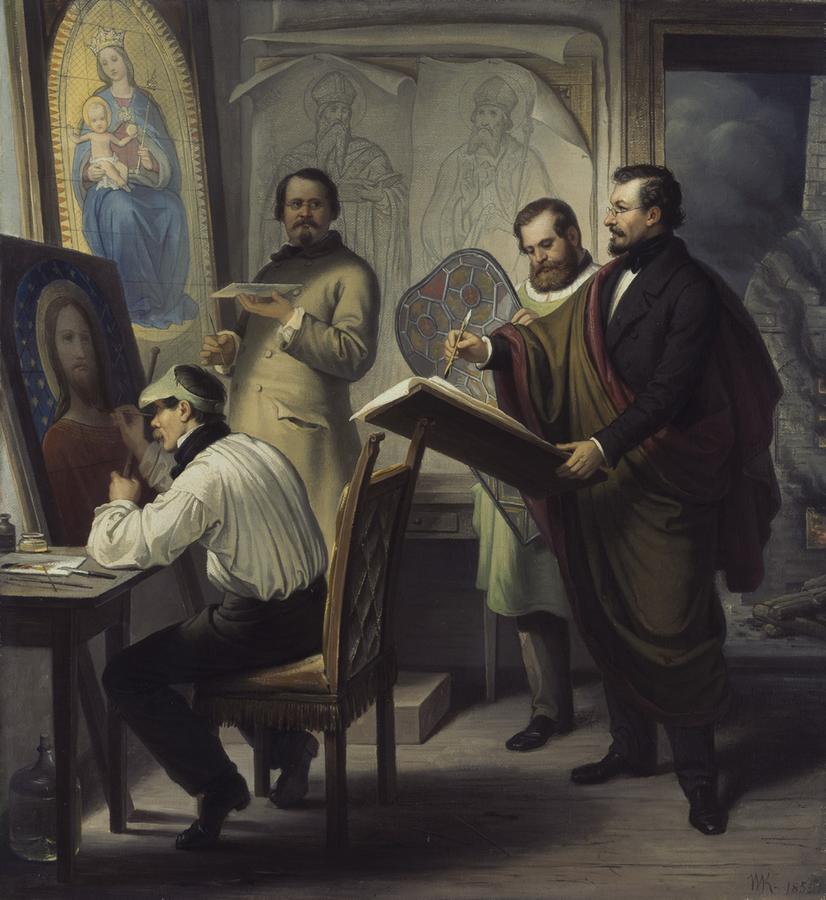
Wilhelm von Kaulbach was a German painter. He was born in Arolsen in Waldeck (now Bad Arolsen, Hesse). His father, who was poor, combined painting with the goldsmith’s trade, but means were found to place Wilhelm, a youth of seventeen, in the art academy of Düsseldorf, then becoming renowned under the directorship of Peter von Cornelius. Young Kaulbach contended against hardships, even hunger. But his courage never failed; and, uniting genius with industry, he was ere long foremost among the young national party which sought to revive the arts of Germany. The ambitious work by which Louis I sought to transform Munich into a German Athens afforded the young painter an appropriate sphere. Cornelius had been commissioned to execute the enormous frescoes in the Glyptothek, and his custom was in the winters, with the aid of Kaulbach and others, to complete the cartoons at Düsseldorf, and in the summers, accompanied by his best scholars, to carry out the designs in colour on the museum walls in Munich. But in 1824 Cornelius became director of the Bavarian academy. Kaulbach, not yet twenty, followed, took up his permanent residence in Munich, labored hard on the public works, executed independent commissions, and in 1849, when Cornelius left for Berlin, succeeded to the directorship of the academy, an office which he held till his death. His son Hermann (1846-1909) also became a distinguished painter.
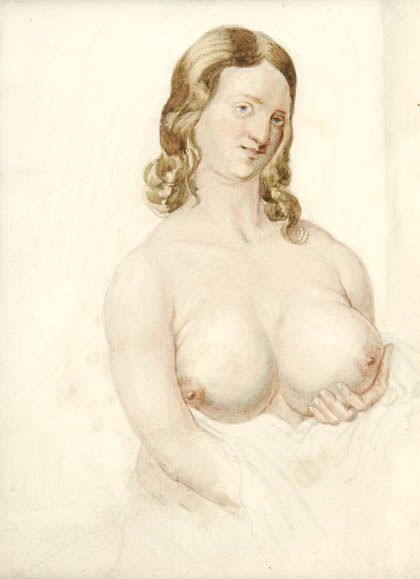
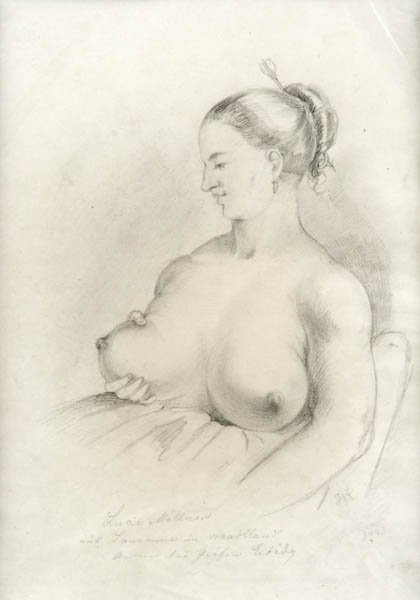
Kaulbach matured, after the example of the masters of the Middle Ages, the practice of mural or monumental decoration; he once more conjoined painting with architecture, and displayed a creative fertility and readiness of resource scarcely found since the era of Raphael and Michelangelo. Early in the series of his multitudinous works came the famous Narrenhaus, the appalling memories of a certain madhouse near Düsseldorf; the composition all the more deserves mention for points of contact with Hogarth. Somewhat to the same category belong the illustrations to Reineke Fuchs. These, together with occasional figures or passages in complex pictorial dramas, show how dominant and irrepressible were the artists sense of satire and enjoyment of fun; character in its breadth and sharpness is depicted with keenest relish, and at times the sardonic smile bursts into the loudest laugh. Thus occasionally the grotesque degenerates into the vulgar, the grand into the ridiculous, as in the satire on the Pigtail Age, a fresco outside the New Pinakothek.

Yet these exceptional extravagances came not of weakness but from excess of power. Kaulbach tried hard to become Grecian and Italian; but he never reached Phidias or Raphael; in short the blood of Dürer, Holbein and Martin Schöngauer ran strong in his veins. The art products in Munich during the middle of the 19th century were of a quantity to preclude first-rate quality, and Kaulbach contracted a fatal facility in covering wall and canvas by the acre. He painted in the Hofgarten, the Odeon, the Palace and on the external walls of the New Pinakothek. His perspicuous and showy manner also gained him abundant occupation as a book illustrator: in the pages of the poets his fancy revelled; he was glad to take inspiration from Wieland, Goethe, even Klopstock; among his engraved designs are the Shakespeare gallery, the Goethe gallery and a folio edition of the Gospels. With regard to these examples of the Munich school, it was asserted that Kaulbach had been unfortunate alike in having found Cornelius for a master and King Louis for a patron, that he attempted subjects far beyond him, believing that his admiration for them was the same as inspiration; and supplied the lack of real imagination by “a compound of intellect and fancy.”
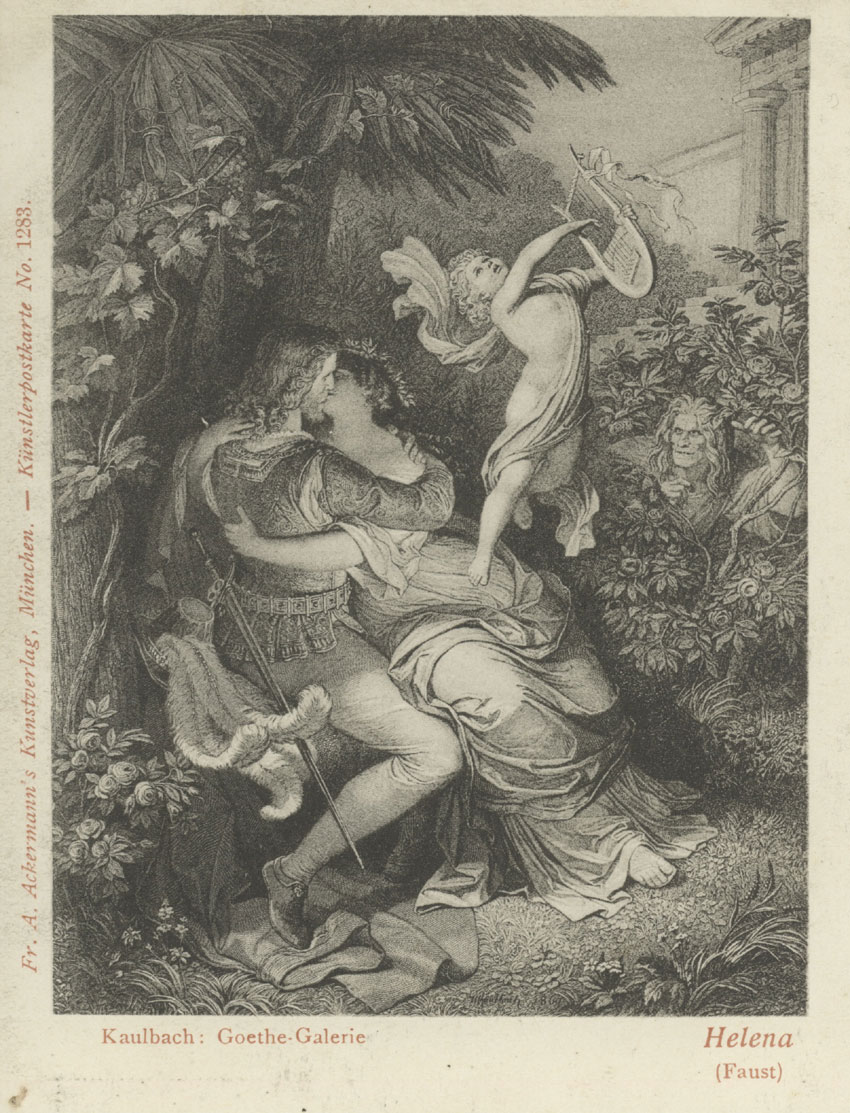
Nevertheless in such compositions as the “Destruction of Jerusalem” and the “Battle of the Huns” Kaulbach shows creative imagination. As a dramatic poet he tells the story, depicts character, seizes on action and situation, and thus as it were takes the spectator by storm. The manner may be occasionally noisy and ranting, but the effect after its kind is tremendous. The cartoon, which, as usual in modern German art, is superior to the ultimate picture, was executed in the artist’s prime at the age of thirty. At this period, as here seen, the knowledge was little short of absolute; subtle is the sense of beauty; playful, delicate, firm the touch; the whole treatment artistic.
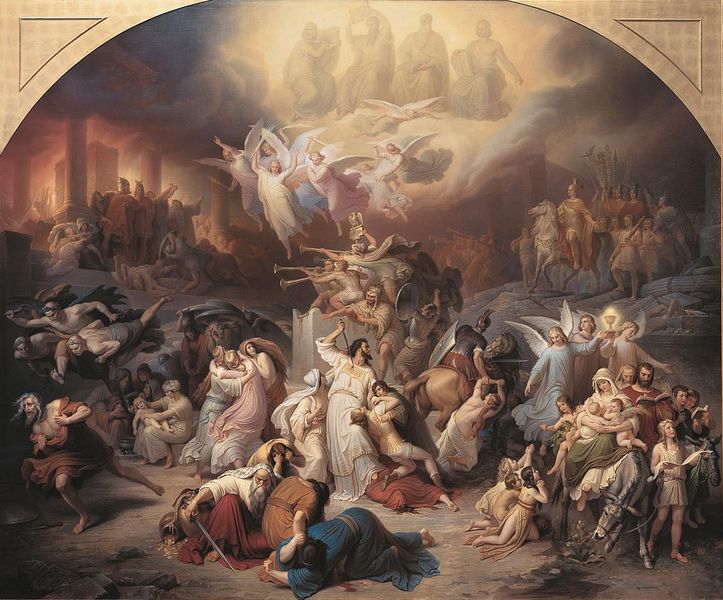
Ten or more years were devoted to what the Germans term a “cyclus” – a series of pictures depicting the Tower of Babel, the Age of Homer, the Destruction of Jerusalem, the Battle of the Huns,(Hunnenschlact) the Crusades and the Reformation. These major tableaux, severally 30 feet long, and each comprising over one hundred figures above life-size, are surrounded by minor compositions making more than twenty in all. The idea is to congregate around the world’s historic dramas the prime agents of civilization; thus here are assembled allegoric figures of Architecture and other arts, of Science and other kingdoms of knowledge, together with lawgivers from the time of Moses, not forgetting Frederick the Great. The chosen situation for this imposing didactic and theatric display is the Treppenhaus or grand staircase in the new museum, Berlin; the surface is a granulated, absorbent wall, specially prepared; the technical method is that known as “water-glass,” or “liquid flint,” the infusion of silica securing permanence. The same medium was adopted in the later wall-pictures in the Houses of Parliament, Westminster.
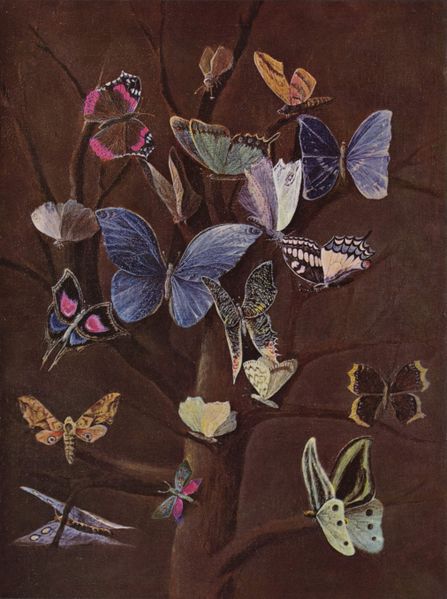
The painter’s last period brings no new departure; his ultimate works stand conspicuous by exaggerations of early characteristics. The series of designs illustrative of Goethe, which had an immense success, were melodramatic and pandered to popular taste. The vast canvas, more than 30 ft. long, the Sea Fight at Salamis, painted for the Maximilianeum, Munich, evinces wonted imagination and facility in composition; the handling also retains its largeness and vigor; but in this astounding scenic uproar moderation and the simplicity of nature are thrown to the winds, and the whole atmosphere is hot and feverish.
